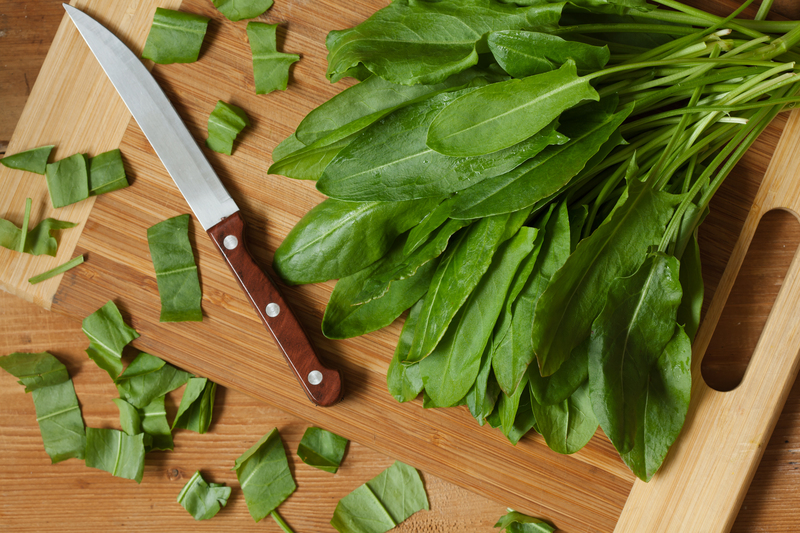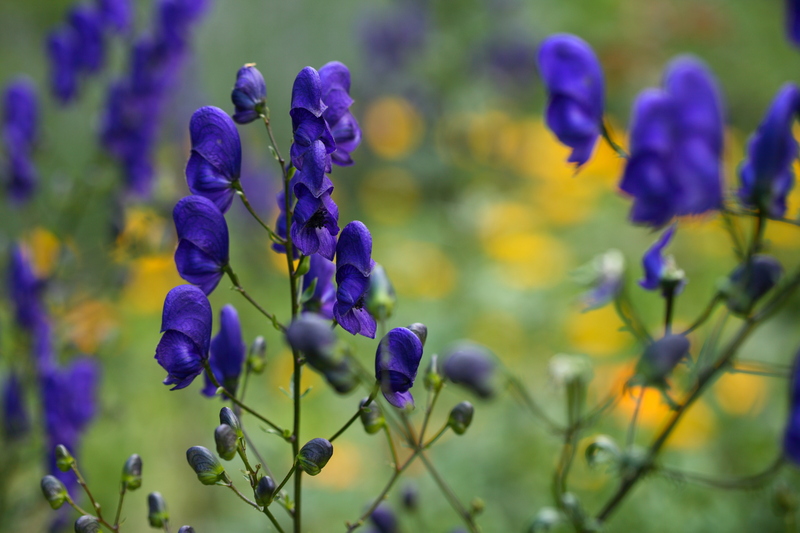Essential Tips for Designing a Child-Friendly Garden Oasis
Posted on 20/09/2025
Essential Tips for Designing a Child-Friendly Garden Oasis
Creating a child-friendly garden oasis is one of the most rewarding transformations you can provide for your home. It not only encourages kids to connect with nature, explore creativity, and get physical exercise but also provides a safe space for families to make cherished memories together. If you're looking for in-depth advice on designing a safe, engaging, and beautiful garden that caters specifically to children, this comprehensive article is for you!
Why Create a Child-Friendly Garden Oasis?
In our modern digital era, children are spending less time outdoors. A child-friendly garden sanctuary is a powerful antidote to screen fatigue, encouraging healthy play, fostering curiosity, and building essential life skills. With intentional design choices, your garden can become a haven for fun, learning, imagination, and relaxation--for both kids and adults alike.
Planning Your Child-Safe Garden Retreat
- Understand Your Space: Assess the garden's layout, prevailing sunlight, shade, drainage, and existing flora. Identify any safety hazards and outline zones for play, relaxation, and planting.
- Consult with Your Children: Involving kids in the planning stage fuels their excitement and ensures the finished space will reflect their interests and needs.
- Set Clear Boundaries: Designing explicit borders helps children understand where they can safely play and explore.
Safety First: Non-Negotiable Features for a Child-Safe Garden Oasis
An essential aspect of a child-friendly garden design is safety. Thoughtful planning and regular maintenance will help to minimize risks and give everyone peace of mind.
- Choose Non-Toxic Plants: Avoid plants with toxic berries or leaves, such as foxglove, oleander, and monkshood. Opt for safe, non-poisonous varieties like sunflowers, snapdragons, and marigolds.
- Use Soft Ground Cover: Play zones should feature soft ground cover--such as grass, bark mulch, or rubber tiles--to cushion falls. Avoid hard surfaces and sharp gravel.
- Secure Water Features: Ponds or fountains are alluring, but can present drowning hazards. Install sturdy fencing, covers, or even skip these features if kids are very young.
- Install Fencing and Gates: High-quality fencing with secure gates keeps children safely within the garden boundaries and deters stray animals from entering.
- Avoid Chemicals: Use natural pest control and organic fertilizers instead of harsh chemicals. Store any tools or treatments securely out of children's reach.
- Check for Allergens: Be mindful of highly allergenic plants and those that attract stinging insects near play areas.
Zones and Features to Inspire Play and Creativity
An engaging child-friendly garden oasis stimulates imagination and supports a range of activities for all ages and interests. Incorporate several interactive areas that invite curiosity and adventure.
- Adventure Playgrounds: Add climbing frames, swings, slides, or a treehouse. Look for sturdy, weather-resistant materials and prioritize safety standards.
- Secret Hideouts: Fabric teepees, willow tunnels, or shrub mazes create magical spots for quiet play, reading, and daydreaming.
- Sand and Water Play: Sensory exploration zones with sandpits, mud kitchens, or a shallow splash pad are always a hit with younger children.
- Creative Corners: Set up an outdoor chalkboard wall, musical instruments such as chimes and drums, or a craft table beneath a shady tree.
- Edible Gardens: *Engage children with raised beds, herb spirals, or container gardens for growing strawberries, tomatoes, peas, and more. Gardening together teaches responsibility and healthy eating habits.*
- Wildlife Habitats: Birdhouses, butterfly hotels, bug hotels, and small ponds boost biodiversity and create endless opportunities for gentle nature observation.
Choosing Child-Safe Materials for Your Garden Retreat
The materials you select can make all the difference for both aesthetics and safety. To ensure the longevity and security of your child-friendly backyard oasis, consider the following:
- Wood: Use pressure-treated or naturally rot-resistant woods (like cedar) for play equipment and decking. Regularly sand wooden surfaces and check for splinters.
- Rubber and Foam: These materials are ideal for soft surfaces under play equipment, minimizing bumps and bruises.
- Natural Stone and Bricks: If you incorporate stone or brick for paths and patios, opt for smooth, non-slip finishes and ensure edges are rounded.
- Fencing and Gates: Choose durable, child-safe materials for all boundaries, with self-closing, self-latching gates.
- Non-Toxic Paints: When painting decorations or old furniture, only use paints guaranteed safe for children.
Engaging Children in Gardening and Outdoor Learning
A child-friendly garden oasis is the perfect classroom for little learners! Children's natural curiosity thrives outdoors, and with a bit of structure, you can nurture their love for gardening and the environment.
- Plant Fast-Growing Seeds: Radishes, sunflowers, and snap peas allow kids to see quick results and sustain engagement.
- Personalize Planting Areas: Dedicate sections just for your children to dig, plant, and design themselves--let them decorate with painted stones or handmade labels.
- Encourage Observation: Provide magnifying glasses, bug catchers, and journals for documenting insects, flowers, and birds throughout the year.
- Composting Together: Turn composting into a family activity. Kids can learn about recycling, nature's cycles, and the benefits for your garden ecosystem.
Prioritizing Accessibility and Maintenance in Family Gardens
For your child-centric garden hideaway to remain enjoyable and safe year-round, make it as accessible and easy to maintain as possible.
- Paths and Surfaces: Wide, smooth paths allow for running, biking, or wheelbarrows. Ensure all surfaces are slip-resistant.
- Low-Maintenance Plants: Native and drought-tolerant plants require less care and allow for more playtime.
- Easy Watering Solutions: Drip irrigation or rain barrels make watering manageable--and fun for kids!
- Routine Safety Checks: Regularly inspect play structures, paths, and plants for hazards such as broken equipment, sharp branches, or toxic mushrooms.
Adding Comfort and Shade to Your Child-Friendly Oasis
A truly family-friendly garden retreat offers comfort throughout the seasons. Quality shade is essential for health and well-being during hot months, while cozy seating ensures everyone can relax.
- Natural Shade: Plant quick-growing trees or large shrubs along the edge of play zones, or train climbers over pergolas for dappled shade.
- Permanent Structures: Invest in awnings, sail shades, or gazebo-style garden rooms for long-term coverage.
- Portable Options: Moveable umbrellas and pop-up tents can be repositioned as the sun moves.
- Outdoor Seating: Include weatherproof benches, hammocks, beanbags, or picnic tables to suit all ages.
Designing for All Ages: Flexible, Adaptable Garden Features
Kids grow fast! Creating a versatile family garden oasis with flexible layouts and adaptable features ensures the space remains relevant for years to come.
- Modular Play Equipment: Choose pieces that can be added to or rearranged as children's interests change.
- Convertible Spaces: Designate areas that can serve as sandpits early on, then become flower beds, patios, or sports courts later.
- Scalable Borders: Hedges or living fences can grow taller to provide privacy as children get older.
- Age-Appropriate Challenges: Include play features for different developmental stages or multiple children (balance beams, tree stumps for jumping, low monkey bars, etc.).
Incorporating Sensory Play and Mindfulness
Gardens are filled with sensory delights! Integrating sensory-friendly elements into your child-focused sanctuary supports children's cognitive and emotional development.
- Fragrant Plants: Lavender, mint, basil, and honeysuckle stir the senses and can be safely touched and smelled.
- Soothing Sounds: Wind chimes, bubbling water features (with safety guards!), and rustling grasses promote tranquility.
- Texture Zones: Mix fine grasses, soft moss, smooth pebbles, and rough bark for exploration through touch.
- Colorful Highlights: Brightly colored planters, painted rocks, and vibrant flowers keep the atmosphere lively.
Creating Magical Evening Spaces
A child-friendly garden oasis doesn't have to close at sunset! Simple lighting and evening attractions can transform your garden into an enchanting place for storytelling, stargazing, and family gatherings.
- Solar or LED Lights: Illuminate paths and play spaces for nighttime exploration.
- Glow-in-the-Dark Elements: Paint stones or decor for a sense of wonder after dusk.
- Fire Pit or Chiminea: Enjoy marshmallow roasting and stories around a safely managed fire feature. Always supervise children closely.
- Night-Blooming Plants: Moonflowers and evening primrose release scent at night and attract pollinators.
Conclusion: Welcoming Your Family to a Perfect Child-Friendly Garden Oasis
Designing a child-friendly garden oasis is a journey of creativity, care, and collaboration. By focusing on safety, flexible design, sensory engagement, and family togetherness, you can craft a uniquely personal retreat where kids--and adults--find happiness, learning, and adventure.
Ready to start your transformation? Whether you're dreaming of a wild woodland adventure, an edible paradise, or a tranquil retreat, these tips will help you create a safe, inspiring, and enduring child-friendly garden that brings joy to your family for years to come.



